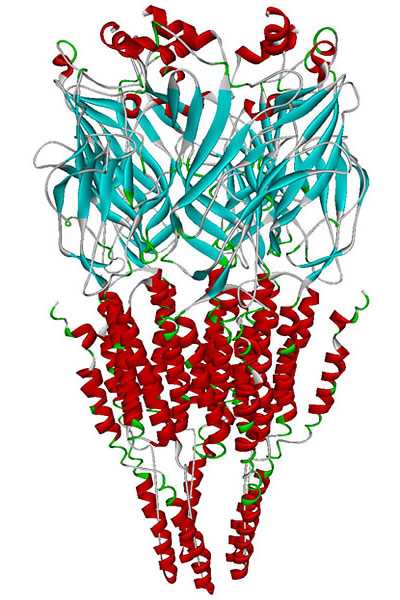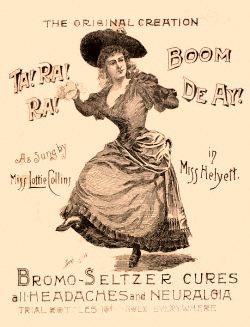|
Tropisetron
Tropisetron is a serotonin 5-HT3 receptor antagonist used mainly as an antiemetic to treat nausea and vomiting following chemotherapy, although it has been used experimentally as an analgesic in cases of fibromyalgia. It was patented in 1982 and approved for medical use in 1992. It is on the World Health Organization's List of Essential Medicines. It is marketed by Novartis in Europe, Australia, New Zealand, Japan, South Korea and the Philippines as Navoban, but is not available in the U.S. It is also available from Novell Pharmaceutical Laboratories and marketed in several Asian countries as Setrovel. Pharmacology Tropisetron acts as both a selective 5-HT3 receptor antagonist and α7-nicotinic receptor agonist. Adverse effects Tropisetron is a well-tolerated drug with few side effects. Headache, constipation, and dizziness are the most commonly reported side effects associated with its use. Hypotension, transient liver enzyme elevation, immune hypersensitivity syndro ... [...More Info...] [...Related Items...] OR: [Wikipedia] [Google] [Baidu] |
5-HT3 Antagonist
The 5-HT3 antagonists, informally known as "setrons", are a class of drugs that act as receptor antagonists at the 5-HT3 receptor, a subtype of serotonin receptor found in terminals of the vagus nerve and in certain areas of the brain. With the notable exceptions of alosetron and cilansetron, which are used in the treatment of irritable bowel syndrome, all 5-HT3 antagonists are antiemetics, used in the prevention and treatment of nausea and vomiting. They are particularly effective in controlling the nausea and vomiting produced by cancer chemotherapy and are considered the gold standard for this purpose. The 5-HT3 antagonists may be identified by the suffix -setron, and are classified under code A04AA of the 's Anatomical Therapeutic Chemical Classification System. Medical uses 5-HT3 antagonists are most effective in the prevention and treatment of chemotherapy-induced nausea and vomiting (CINV), especially that caused by highly emetogenic drugs such as cisplatin; when ... [...More Info...] [...Related Items...] OR: [Wikipedia] [Google] [Baidu] |
Tropanserin
Tropanserin ( INN; MDL-72,422) is a drug which acts as a potent and selective 5-HT3 receptor antagonist. It was investigated in clinical trials for the treatment of migraine in the 1980s but was never marketed. Synthesis Tropanserin can be prepared by the reaction of tropine with 3,5-dimethylbenzoyl chloride. See also * Bemesetron * Zatosetron * Ricasetron * Granisetron Granisetron is a serotonin 5-HT3 receptor antagonist used as an antiemetic to treat nausea and vomiting following chemotherapy and radiotherapy. Its main effect is to reduce the activity of the vagus nerve, which is a nerve that activates the v ... * Tropisetron References 5-HT3 antagonists Benzoate esters Tropanes {{nervous-system-drug-stub ... [...More Info...] [...Related Items...] OR: [Wikipedia] [Google] [Baidu] |
Bemesetron
Bemesetron (MDL-72222) is a drug which acts as an antagonist at the 5HT3 receptor. It has antiemetic effects comparable to metoclopramide Metoclopramide is a medication used for stomach and esophageal problems. It is commonly used to treat and prevent nausea and vomiting, to help with emptying of the stomach in people with delayed stomach emptying, and to help with gastroesoph ..., however it is not used clinically, instead its main application is in scientific research studying the involvement of the 5HT3 receptor in the actions of drugs of abuse. See also * Tropanserin * Tropisetron * Zatosetron * Ricasetron * Granisetron References 5-HT3 antagonists Tropanes Benzoate esters Chlorobenzenes Glycine receptor agonists Glycine receptor antagonists {{nervous-system-drug-stub ... [...More Info...] [...Related Items...] OR: [Wikipedia] [Google] [Baidu] |
Ricasetron
Ricasetron (BRL-46470) is a drug which acts as a selective antagonist at the serotonin 5-HT3 receptor. It has antiemetic effects as with other 5-HT3 antagonists, and also has anxiolytic effects significantly stronger than other related drugs, and with less side effects than benzodiazepine anxiolytics. However, it has never been developed for medical use. See also * Zatosetron * Bemesetron * Tropanserin *Tropisetron *Granisetron Granisetron is a serotonin 5-HT3 receptor antagonist used as an antiemetic to treat nausea and vomiting following chemotherapy and radiotherapy. Its main effect is to reduce the activity of the vagus nerve, which is a nerve that activates the v ... References 5-HT3 antagonists Tropanes Ureas Indoles {{nervous-system-drug-stub ... [...More Info...] [...Related Items...] OR: [Wikipedia] [Google] [Baidu] |
Zatosetron
Zatosetron (LY-277,359) is a drug which acts as an antagonist at the 5HT3 receptor It is orally active and has a long duration of action, producing antinauseant effects but without stimulating the rate of gastrointestinal transport. It is also an effective anxiolytic in both animal studies and human trials, although with some side effects at higher doses. See also * Ondansetron *Bemesetron *Granisetron *Ricasetron *Tropanserin Tropanserin ( INN; MDL-72,422) is a drug which acts as a potent and selective 5-HT3 receptor antagonist. It was investigated in clinical trials for the treatment of migraine in the 1980s but was never marketed. Synthesis Tropanserin can be p ... * Tropisetron References 5-HT3 antagonists Tropanes Salicylamide ethers Chloroarenes Glycine receptor agonists Glycine receptor antagonists {{nervous-system-drug-stub ... [...More Info...] [...Related Items...] OR: [Wikipedia] [Google] [Baidu] |
Alpha-7 Nicotinic Receptor
The alpha-7 nicotinic receptor, also known as the α7 receptor, is a type of nicotinic acetylcholine receptor implicated in long-term memory, consisting entirely of α7 subunits.Pharmacology, (Rang, Dale, Ritter & Moore, , 5th ed., Churchill Livingstone 2003) p. 138. As with other nicotinic acetylcholine receptors, functional α7 receptors are pentameric .e., (α7)5 stoichiometry">stoichiometry.html" ;"title=".e., (α7)5 stoichiometry">.e., (α7)5 stoichiometry It is located in the brain, spleen, and lymphocytes of lymph nodes where activation yields Excitatory postsynaptic potential, post- and excitatory presynaptic potential, presynaptic excitation, mainly by increased Ca2+ permeability. Further, recent work has implicated this receptor as being important for generation of adult mammal neurons in the retina. Functional α7 receptors are present in the submucous plexus neurons of the guinea-pig ileum. Medical relevance Recent work has demonstrated a potential role in redu ... [...More Info...] [...Related Items...] OR: [Wikipedia] [Google] [Baidu] |
Antiemetic
An antiemetic is a drug that is effective against vomiting and nausea. Antiemetics are typically used to treat motion sickness and the side effects of opioid analgesics, general anaesthetics, and chemotherapy directed against cancer. They may be used for severe cases of gastroenteritis, especially if the patient is dehydrated. Some antiemetics previously thought to cause birth defects appear safe for use by pregnant women in the treatment of morning sickness and the more serious hyperemesis gravidarum. __TOC__ Types * 5-HT3 receptor antagonists block serotonin receptors in the central nervous system and gastrointestinal tract. As such, they can be used to treat post-operative and cytotoxic drug nausea & vomiting. However, they can also cause constipation or diarrhea, dry mouth, and fatigue. ** Dolasetron (Anzemet) can be administered in tablet form or in an injection. ** Granisetron (Kytril, Sancuso) can be administered in tablet (Kytril), oral solution (Kytril), ... [...More Info...] [...Related Items...] OR: [Wikipedia] [Google] [Baidu] |
Hypotension
Hypotension is low blood pressure. Blood pressure is the force of blood pushing against the walls of the arteries as the heart pumps out blood. Blood pressure is indicated by two numbers, the systolic blood pressure (the top number) and the diastolic blood pressure (the bottom number), which are the maximum and minimum blood pressures, respectively. A systolic blood pressure of less than 90 millimeters of mercury (mmHg) or diastolic of less than 60 mmHg is generally considered to be hypotension. Different numbers apply to children. However, in practice, blood pressure is considered too low only if noticeable symptoms are present. Symptoms include dizziness or lightheadedness, confusion, feeling tired, weakness, headache, blurred vision, nausea, neck or back pain, an irregular heartbeat or feeling that the heart is skipping beats or fluttering, or fainting. Hypotension is the opposite of hypertension, which is high blood pressure. It is best understood as a physiolog ... [...More Info...] [...Related Items...] OR: [Wikipedia] [Google] [Baidu] |
Headache
Headache is the symptom of pain in the face, head, or neck. It can occur as a migraine, tension-type headache, or cluster headache. There is an increased risk of depression in those with severe headaches. Headaches can occur as a result of many conditions. There are a number of different classification systems for headaches. The most well-recognized is that of the International Headache Society, which classifies it into more than 150 types of primary and secondary headaches. Causes of headaches may include dehydration; fatigue; sleep deprivation; stress; the effects of medications (overuse) and recreational drugs, including withdrawal; viral infections; loud noises; head injury; rapid ingestion of a very cold food or beverage; and dental or sinus issues (such as sinusitis). Treatment of a headache depends on the underlying cause, but commonly involves pain medication (especially in case of migraine or cluster headache). A headache is one of the most commonly experi ... [...More Info...] [...Related Items...] OR: [Wikipedia] [Google] [Baidu] |
Constipation
Constipation is a bowel dysfunction that makes bowel movements infrequent or hard to pass. The stool is often hard and dry. Other symptoms may include abdominal pain, bloating, and feeling as if one has not completely passed the bowel movement. Complications from constipation may include hemorrhoids, anal fissure or fecal impaction. The normal frequency of bowel movements in adults is between three per day and three per week. Babies often have three to four bowel movements per day while young children typically have two to three per day. Constipation has many causes. Common causes include slow movement of stool within the colon, irritable bowel syndrome, and pelvic floor disorders. Underlying associated diseases include hypothyroidism, diabetes, Parkinson's disease, celiac disease, non-celiac gluten sensitivity, colon cancer, diverticulitis, and inflammatory bowel disease. Medications associated with constipation include opioids, certain antacids, calcium channel b ... [...More Info...] [...Related Items...] OR: [Wikipedia] [Google] [Baidu] |
Dizziness
Dizziness is an imprecise term that can refer to a sense of disorientation in space, vertigo, or lightheadedness. It can also refer to disequilibrium or a non-specific feeling, such as giddiness or foolishness. Dizziness is a common medical complaint, affecting 20-30% of persons. Dizziness is broken down into 4 main subtypes: vertigo (~25-50%), disequilibrium (less than ~15%), presyncope (less than ~15%), and nonspecific dizziness (~10%). * Vertigo is the sensation of spinning or having one's surroundings spin about them. Many people find vertigo very disturbing and often report associated nausea and vomiting. * Presyncope describes lightheadedness or feeling faint; the name relates to syncope, which is actually fainting. * Disequilibrium is the sensation of being off balance and is most often characterized by frequent falls in a specific direction. This condition is not often associated with nausea or vomiting. * Non-specific dizziness may be psychiatric in origin. I ... [...More Info...] [...Related Items...] OR: [Wikipedia] [Google] [Baidu] |
Intravenous Therapy
Intravenous therapy (abbreviated as IV therapy) is a medical technique that administers fluids, medications and nutrients directly into a person's vein. The intravenous route of administration is commonly used for rehydration or to provide nutrients for those who cannot, or will not—due to reduced mental states or otherwise—consume food or water by mouth. It may also be used to administer medications or other medical therapy such as blood products or electrolytes to correct electrolyte imbalances. Attempts at providing intravenous therapy have been recorded as early as the 1400s, but the practice did not become widespread until the 1900s after the development of techniques for safe, effective use. The intravenous route is the fastest way to deliver medications and fluid replacement throughout the body as they are introduced directly into the circulatory system and thus quickly distributed. For this reason, the intravenous route of administration is also used for the cons ... [...More Info...] [...Related Items...] OR: [Wikipedia] [Google] [Baidu] |



